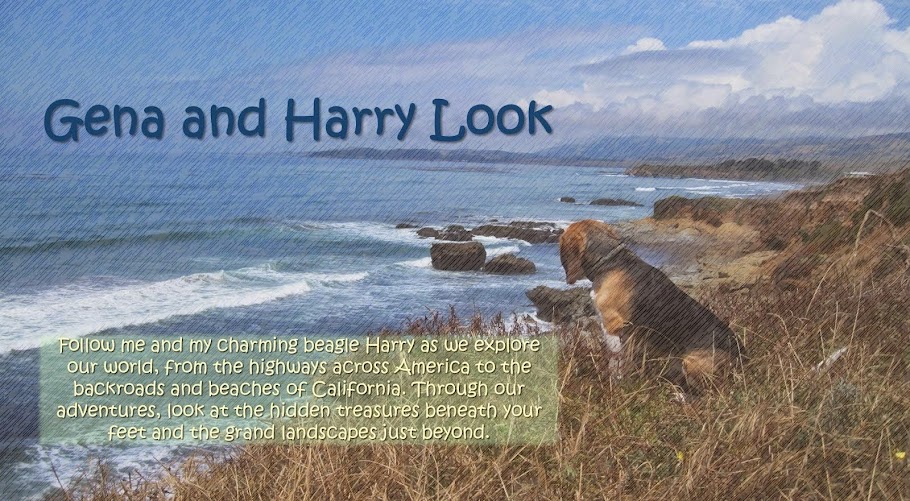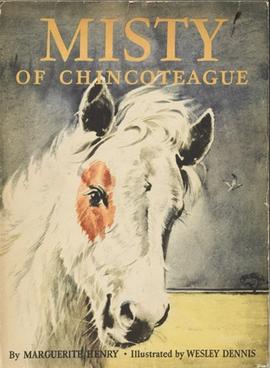 |
Harry enjoys one of Hopewell's many trailside creeks
at St Michaels Farm Preserve |
Sept 11-14
When telling people that I am visiting my sister in New Jersey, I always feel the need to add the qualifier, "The
nice part of New Jersey." In my experience of the state, there is more of the nice part than the much publicized and vilified urban part.
My sister Rebecca and her son Sky live deep in the deciduous woods of central New Jersey, in Hopewell Township, a town made famous by being the location of the Lindbergh home at the time of the
infamous kidnapping case.
 |
| Lindbergh house in Hopewell during kidnapping investigation, 1932 (Photo nyt.com) |
I had visited the former Lindbergh residence on a prior visit with my history buff brother, Richard, but on this visit my primary experience of Lindbergh was one of navigation trauma as Google maps insisted that the twisty, narrow, roller coaster of a foot path known as Lindbergh Road was the most direct route to my sister's house. At the end of a particularly grueling drive from the Allegheny Forest, this route finale was sprung upon me by Google as I approached the limits of my ability to remain calmly on the road. The phrase, "What the f***?!" was delivered more than once in a tone that sent Harry cringing to the safety of the back seat. And so it was that Rebecca was the first of my sisters to see an utterly exasperated driver coming down their driveway to safety and refuge as the sun set on a road trip milestone day.
Harry and I quickly settled in to life at Haven Hopewell. After awakening to the musky, comforting smell of oil pastels and turpentine in Rebecca's studio where Harry and I slept, we would often bundle off to the
Brick Farm Market, a sublime purveyor of locally grown and produced food just 5 minutes from the house. In what became an extension of the pantry, Sky and I could satisfy our coffee craving effortlessly. Sky's "usual" is a cup of the house blend with a shot of espresso, black, sufficient to fuel his acrobatic training for the day. My coffee must be light and sweet, a choice, I've been told, for folks who don't actually like coffee. I choose to think it's the favorite of people who love coffee ice cream.
 |
Even Rebecca, a non coffee drinker, can't pass up this confection
at Brick Farm Market |
The place has great, friendly, personalized service, beautiful prepared food (I discover a white fish salad that becomes an instant addiction on my morning bagel), and a mindful selection of groceries. Between Brick Farm, the locally made bagels, and Sky and Rebecca's innovative and wholesome cooking, my stay in Hopewell was a continuous culinary indulgence.
 |
| Hopewell Haven kitchen frenzy during speed visit by niece Anna |
But New Jersey holds an unexpected treasure for those who think only of Newark and the Jersey shore: it is a wonderland of verdant trails.There are dozens of walking trails around Hopewell, most of them welcoming to dogs. Most days, Rebecca, her 15 year old deaf and nearly blind corgi, Cubby, Harry and I take a walk along the banks of a quiet creek, through a goldenrod meadow, or down an avenue of towering tulip trees.
 |
| Harry and the tulip trees |
Cubby takes his time navigating the blurry obstacles, drinking deeply of the trailside scents, and keeping an eye on Rebecca who waves a white banner on her walking stick to maintain her position as guiding light. Harry and I often speed ahead on our own and circle back around to meet them. I am the seeker of wildflowers, butterflies and other small creatures and Rebecca has the artist's eye for the sculpture, poetry and composition of stone, water, wood and moss. It's a fine recipe for a discovery filled walk.
 |
Cubby's poor navigating skills track him through a corgi sized
puddle just before getting into the car. |
 |
| Meadow jumping mouse pauses in the trail. |
While walks of this caliber offer the sweetest of spiritual messages to me absent the man made constructs of church and religion, when in Hopewell I sometimes accompany my sister to Sunday Meeting at the Stony Brook Quaker Meeting House. I have lately identified as atheist (perhaps the provocative nature of the word appeals to me) but am probably more of an agnostic in that I insist that neither I, nor any other human knows with certainty what comes after death. That being said, an hour spent in silent reflection, in a meeting house built in 1760 that has survived two wars, sitting on a wooden bench polished by a hundred reverent bottoms before me, is a spiritually soothing experience. It's fascinating to follow where your mind leads in this setting---similar to meditation but walking within the woods of the simultaneously wandering minds of the others in the meeting house. It feels a nurturing, safe place.
Eager for a bit more than a meditative stroll, Harry and I made an expedition, complete with packed lunch and trail recommendations from Hopewell hikers extraordinaire, Michael and Bob, to the Delaware Water Gap, a favorite destination for New Jersey and Pennsylvania hikers. The Sunfish Pond trail overlaps a section of the mighty Appalachian trail and has an elevation gain that had inspired some ominous reviews on AllTrails. One reviewer wrote, "Great for one time. Never again without a helicopter." Uh oh.
But the first hints of fall colors and a soundtrack of water on rock quickly erased all concerns of exertion as we slowly ascended through a prism of red maple, white oak, hickory and eastern hemlock.
 |
Many parts of the trail are very stoney. It makes
the trail feel more like trailblazing. |
 |
| Dogwood just starting to turn |
 |
| Looking up along the Appalachian Trail |
Before reaching Sunfish Pond, I encounter Walt and his giant akita/golden retriever mix who are "hiking though" meaning they are walking the Appalachian Trail in its 2,180 mile entirety. He had begun his sojourn at the northernmost trailhead in Katahdin, Maine in June and was half way through to the southern trailhead in Georgia. The two of us discussed the ways in which our adventures were different and were just getting to the similarities when a rowdy group of seniors trounced noisily down the trail, walking poles swinging wildly, and broke our bonding spell. The cheerful chatter of the seniors faded behind me as I continued my ascent, "You're almost there!" they called after me. Walt trudged off after them, 1000 miles of trail ahead of him.
Sunfish Pond was a lovely spot for a picnic lunch and a soak of hot feet in cool water. Harry chased dragonflies and squirrels while I ate my hummus wrap. There was quiet and solitude at the pond with no one but a silent circling glider to share the view.
 |
| Community messaging near Sunfish Pond |
The rocky, narrow stairstep of the Dunnfield Creek connecting trail took us homeward, the shrub lined passageways expanding out into a mossy creek bed straight out of Middle Earth as we reached bottom.
 |
| Harry in Dunnfield Creek |
 |
| Green frog eyes me from the muddy shallows |
 |
| Barberry |
 |
| Stone, wood, water, moss |
I'm not quite sure what all the bellyaching about the difficulty of this trail was about. Here's my theory: California (west coast?) hikers are more accustomed to most trails, that are anywhere other than a coastal bluff, being steep and rocky. Perhaps New Jerseyans expect only gentle meadows. The next time your hear of New Jersey, think of land trusts and nature reserves, creek side paths and trails through goldenrod as tall as a man. Think of walks through historic woods that hold secrets of battles long ago. Think of endless opportunities to explore the countryside with your dog. Think of a walk in the woods.
In Hopewell, gentleness is the rule. I had two glorious weeks to rejuvenate there (perhaps should have taken longer). In another craigslist miracle (there would be many related to this trip), I find Randy, who came to the house with a cheerful attitude and an abundance of dog stories with to fix Pagoo's leaking water pump and shore up some seals. Rebecca and Sky are refuge, but the voice of the Atlantic Ocean is a siren's call, and I am compelled to her shores, Harry to the longest stretch of beach and Pagoo to follow a hermit crab's path to the sea.
 |
Randy's mobile RV repair
|





























































